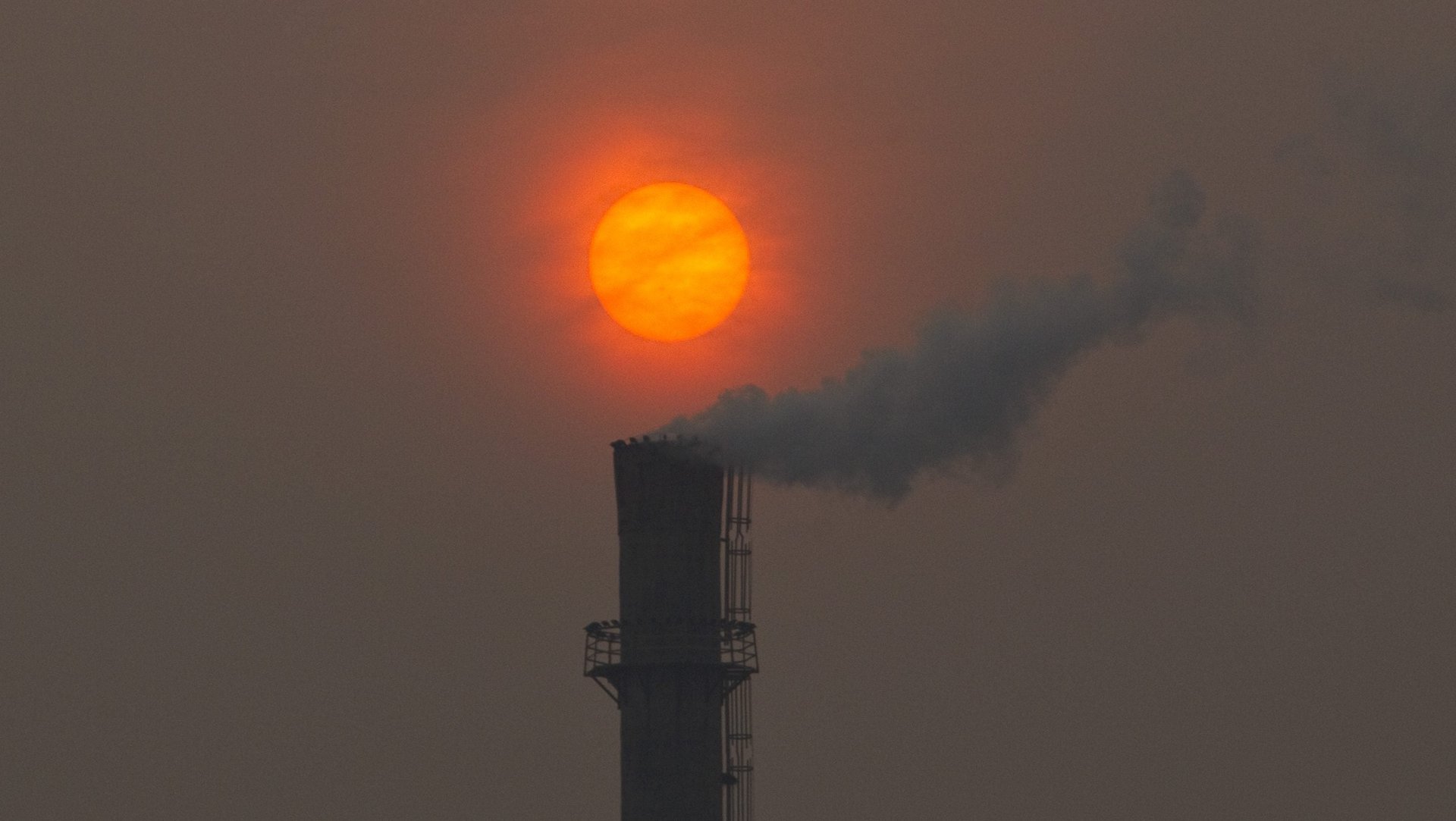Pollution data from 2017 show China wavering between GDP growth and clean air
In 2013, China rolled out a plan to reduce its notorious air pollution within five years. But new data show that Chinese policy makers really do have to choose between economic growth and clean air—at least in the short term.


In 2013, China rolled out a plan to reduce its notorious air pollution within five years. But new data show that Chinese policy makers really do have to choose between economic growth and clean air—at least in the short term.
To get a sense of that, just compare pollution data in the first quarter and the fourth quarter of 2017, from a report this week from environmental advocacy group Greenpeace.
In the first quarter of 2017, levels of PM2.5—the smallest inhalable deadly pollutant—in 28 cities from a year earlier in the smoggy Beijing-Tianjin-Hebei region, home to many old factories, increased 6%. Meanwhile, the region’s PM2.5 levels dropped 33% in the fourth quarter, and Beijing in particular saw a fall of 54% in its PM2.5 levels, according to the report. That’s likely the results of intensive winter cleanup measures (and also highly favorable weather conditions), noted the analysis.
To curb pollution in the Beijing-Tianjin-Hebei region, authorities have rolled out measures such as going after polluting firms, controlling coal use, and reducing industrial output. For example, authorities launched a year-long inspection project in April that led to shutdowns and production halts of thousands of firms that violated pollution rules. Companies targeted included those from the ceramics, chemicals, and cement industries. In September, China also began halving steel production in key manufacturing hubs, such as Hebei’s Tangshan, and asked producers to cut 30% (paywall) of their coking coal production.
By one estimate in October, China’s pollution war could cut economic growth by 0.25 percentage point for the last quarter of 2017 and first quarter of 2018. (But GDP numbers also fail to include the true cost of pollution, such as the toll it takes on human health and life expectancy.)
Not every place has chosen to sacrifice economic growth for fresh air. Heilongjiang province in China’s northeast was the worst performer in terms of cleaning up its air last year among 31 provinces and regions tracked by Greenpeace. Heilongjiang recorded a 30% increase in production of crude steel from a year ago, but its PM2.5 levels rose 10.4% at the same time. In contrast, Beijing’s PM2.5 levels declined by 20.8% in 2017, while its cement production fell 27% from a year ago.
“China’s national air pollution action plan has brought massive reductions in pollution levels and associated health risks,” said Greenpeace climate and energy campaigner Huang Wei in a statement, “but policies favoring coal and heavy industry are holding back progress.”
China still has a long way to go. China saw its smallest annual improvement since it started its national anti-pollution campaign in 2013, noted Greenpeace, with the average PM2.5 level dropping only 4.5% in 2017. In addition, over 70% of the 365 ranked cities failed to meet the national standard PM2.5 level of 35 micrograms per cubic meter, according to Greenpeace (link in Chinese).
Despite this winter’s efforts, air pollution in the capital is already making a comeback. Beijing is facing an “orange” smog alert—the second-highest warning level—this coming weekend, according to (link in Chinese) the Beijing Municipal Environmental Protection Bureau.